When you try to boot your Windows OS in Safe Mode, but find that the Windows Safe Mode is stuck at Please wait or Loading files screens or while loading classpnp.sys, disk.sys, amdkmpfd.sys, aswardisk.sys, etc files, then this post offers suggestions that may help you get out of the problem.
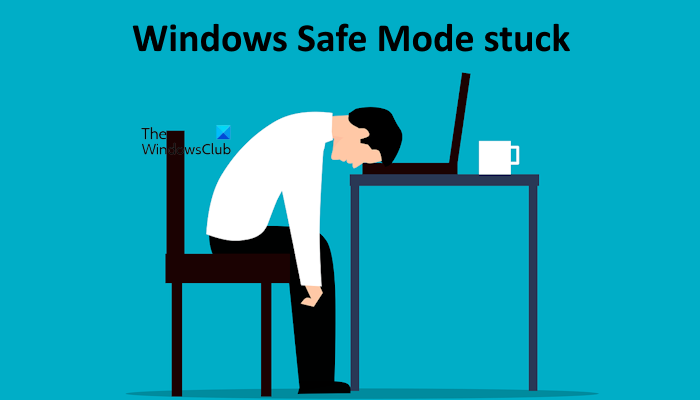
Windows Safe Mode stuck
This Safe Mode error can occur due to several reasons including hardware failure, software corruption, corrupt files in the system, corrupt drivers, and issues with the BIOS. When your Windows 11/10 PC is stuck on some screen or message or it means that the OS is unable to locate and load the system files that are required for the process to complete. They could be system drivers or OS files – eg. classpnp.sys, disk.sys, amdkmpfd.sys, aswardisk.sys, etc files. For instance, classpnp.sys is a Microsoft Windows SCSI class system file that comes as part of the Windows OS.

The chances are that since you cannot boot into Safe Mode, you will not be able to boot in Clean Boot State or Normal Boot as well.
Well if you are in this situation, try the following suggestions and see if something helps.
Disconnect your external hardware
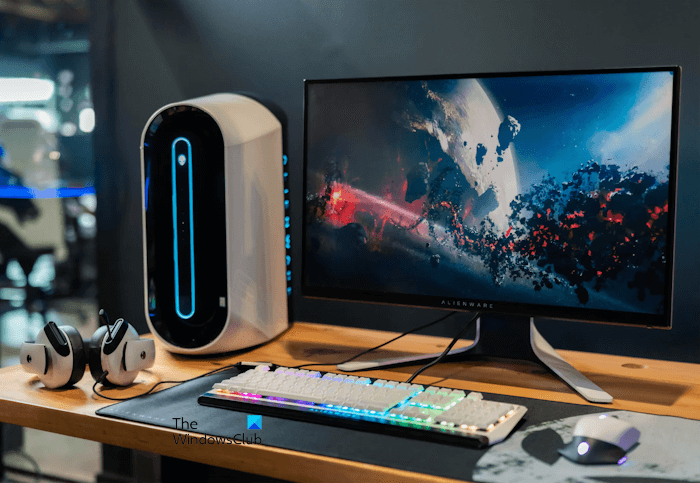
Before you begin, disconnect your external hardware – eg USB mouse, external hard drive, Bluetooth dongle for a wireless mouse, external cooler and any other device to your laptop or PC.
Boot into Advanced Startup Options
To boot you into the Advanced Startup Options screen, press Shift and click Restart. Does this work? If so, good. If you cannot then you need to use the installation media. The Advanced Startup Options screen is also called Windows Recovery Environment. Because you are stuck in Safe Mode, you cannot use the Shift + Restart method to enter the Windows Recovery Environment. In this case, you can enter the Windows Recovery Environment by interfering with the normal boot process. Here is how to do that:
- Press and hold the power button to completely shut down your computer.
- Press the power button to turn on your system.
- Press and hold the power button immediately when you see the manufacturer’s logo or Windows logo on the screen.
- Repeat these steps until you see the Preparing startup repair screen on boot. When this screen appears, you will enter the Windows Recovery Environment.
Now, since you cannot enter Safe Mode, then you have to boot into Windows 11/10 with your Windows Installation Media or Recovery Drive and select Repair your computer to enter Troubleshoot > Advanced Startup Options.
Once here, you can now use CMD to run commands. You may use a Windows 11/10 DVD or a bootable USB drive, or you can burn Windows 11/10 ISO to a USB drive using another computer and then use it.
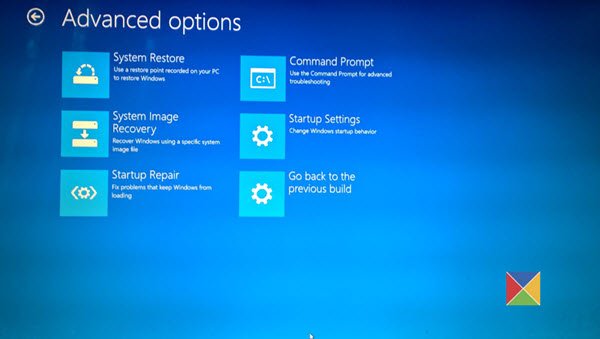
Once you have accessed the Advanced Options, you can use several options offered below to resolve the issue.
- Run Startup Repair
- Run System Restore
- Run Windows Update
- Run System File Checker using CMD
- Change Startup settings
- Reset BIOS
- Update BIOS.
1] Run Startup Repair
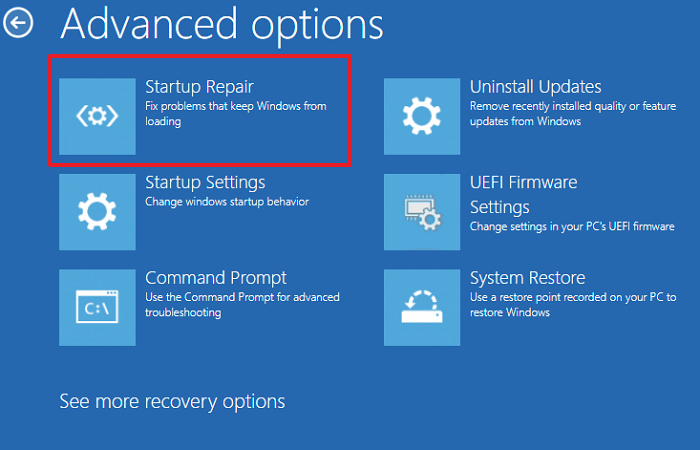
From the Advanced options screen, run Startup Repair. Startup Repair is a built-in tool in Windows computers that can be launched through the Windows Recovery Environment. It looks for damaged or corrupt system image files and other issues and repairs your system.
2] Run System Restore
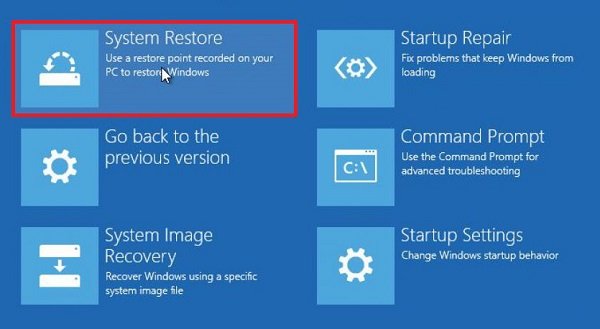
If the problem started recently, you can run Run System Restore and see. Windows creates restore points automatically. However, if you want, you can also create system restore points manually. These restore points are helpful to restore a computer in a previous working state if a problem occurs. If the restore points exist on your system, you can run System Restore.
Read: How to get out of Safe Mode in Windows.
3] Run Windows Update
From the Advanced options screen, open Command Prompt and run Windows Updates from the Command Line.
4] Run SFC and DISM scan
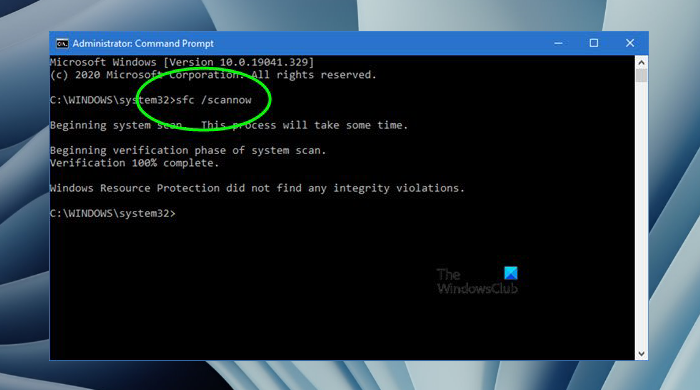
From the Advanced options screen, open Command Prompt and run System File Checker and DISM tools. It allows users to scan for corruptions in Windows system files and restore corrupted files.
5] Change Startup settings
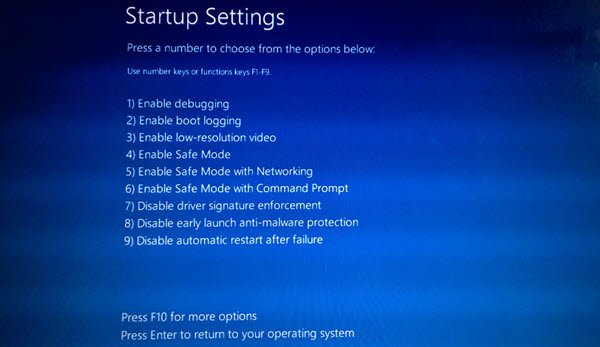
Click on the Change Startup settings and restart to temporarily disable these two settings:
- Disable driver signature enforcement
- Disable early-launch anti-malware protection.
Once the issue is resolved, remember to reverse the changes made.
Related: Safe Mode not working; Cannot boot in Safe Mode.
7] Reset BIOS
If you have recently made any change in BIOS and then started facing this problem, maybe this is the time when you revert the change or reset BIOS settings to default values. To open BIOS settings, you need to restart your computer and keep pressing F2 or F9 (based on the motherboard manufacturer). Once there, find out the corresponding option and reset BIOS to default settings.
6] Update BIOS
If you’re still experiencing the issue, then you can try updating the BIOS on your system by creating a Bootable USB. Computers of different brands may have different methods to update BIOS from a USB flash drive. Hence, we suggest you read the instructions to update the BIOS from the USB flash drive from the official website of your computer’s manufacturer.
Related read: PC stuck and cannot exit Safe Mode.
Hope something here helps you.
How to fix a PC stuck in a boot loop?
When a PC gets stuck in a boot loop, it keeps restarting again and again. In this case, Windows may or may not display a message. This issue occurs due to different reasons, like after installing a Windows update, after updating a driver, etc. In some cases, the PC keeps restarting after a BSOD error, whereas, sometimes, a hardware failure is also responsible for this problem. In each case, the fix is different. Hence, you need to apply a fix after identifying the cause of this problem.
How to fix the BIOS loop?
If your computer is stuck in a BIOS loop, i.e., it keeps booting in BIOS, the boot sequence might have been changed or your RAM might have been placed incorrectly. A loose SATA cable connection can also be responsible for this issue. To fix this problem, you can try some fixes, like reseating RAM, resetting BIOS to default, disabling Fast Boot in BIOS (if applicable), resetting the CMOS battery, etc.
Read next: Keyboard or Mouse NOT working in Safe Mode.
Leave a Reply